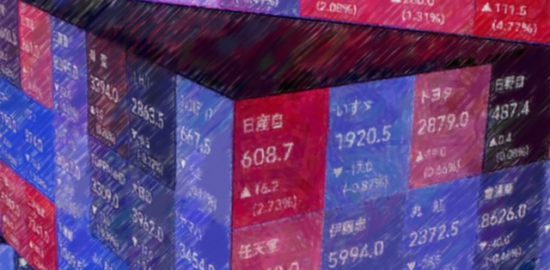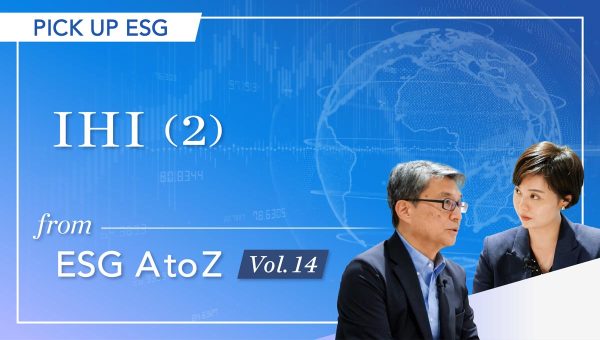Japan Markets ViewLaunch of TSE’s Stock Securities Codes Using an Alphabetic Character
Jan 12, 2024

[Nikkei QUICK News] On January 5, the Tokyo Stock Exchange (TSE) approved the listing of Veritas In Silico, a drug discovery-related company, on the Growth Market. The listing date will be February 8. The company’s securities code is “130A,” marking the first case where an alphabetic character is used in the securities code. Traditionally, 4-digit numeric codes have been assigned to companies in initial public offerings (IPOs), but the number of combinations available has been decreasing. As a result, securities codes incorporating an alphabet will be assigned to newly listed stocks starting in 2024. We interviewed the Securities Identification Code Committee, which is operated mainly by the TSE and assigns securities codes.
-
Please tell us about the reasons for starting to use alphabetic characters in the securities codes.
-
Currently, securities codes are made up of 4-digit numbers. Therefore, there is a limit to the number of securities codes, and it has been necessary to deal with running out of numbers. In fact, 1,300 of the 4-digit securities codes are allocated to bonds and public bonds. Thus, only about 8700 codes, not 9999, are available for stocks, exchange-traded funds (ETFs), and real estate investment trusts (REITs). Due to fewer codes remaining than anticipated, the Securities Identification Code Committee started to consider how to deal with them.
-
When did the Committee decide to incorporate alphabetical characters into the codes?
-
In 2009, the Securities Identification Code Committee announced its basic policy to increase the number of codes by incorporating alphabets when all 4-digit numeric codes are used up. In 2010, the Committee decided on specific characters and positions for incorporation. For example, the alphabet “Q” is not used because it is pronounced the same as the number “9” in Japanese and can be easily confused. The number of characters to be used is 19, excluding B, E, I, O, Q, V, and Z. Since then, the Committee has held a series of discussions, including on the timing of implementation.
-
To what extent can the number of codes be increased with the introduction of the new securities code system?
-
The new securities codes assigned to the companies approved for listing start with 130A with an alphabetic character in the fourth digit, followed by 131A, in that order. When the code 999A is assigned, 130C is assigned next since the alphabet “B” cannot be used. When the code reaches 999Y, the codes with an alphabetic character in the second digit will be assigned next, starting with 1A00. The codes with alphabetic characters in both the second and fourth digits, such as 1A0A, can also be created, but this structure will be left for future expansion. The maximum number of codes will be about 66,000. With such a large number of codes, there is no need to worry for the time being.
-
Are there any changes to the securities codes of currently listed companies?
-
Although often misunderstood, the securities codes with an alphabet will only be assigned to companies that are newly approved for listing starting this year. There will be no change to the 4-digit securities codes for currently listed companies. For example, changing Nintendo’s code 7974 would cause confusion in the securities industry, including system perspective. We have no plans to convert the securities codes of all listed companies to the ones with an alphabetic character.
-
Are there any plans to organize the new securities codes by industry sector?
-
We have no plans to group codes by industry. In the past, we had roughly linked the codes to each industry, for example by assigning codes in the 8300 range to the banking industry. We have received inquiries from securities companies on linking the codes to industry sectors again with the launch of the new code system. However, a code will be assigned in the order of listing approval. Conventionally, securities codes with “01” in the last two digits, which are often called “01 stocks,” were assigned to stocks of large companies. However, this is not the case with securities codes incorporating an alphabetic character.
-
How did the financial community, including securities companies, react to the decision of introducing the new code system?
-
Some mentioned that attention should be paid until they get used to entering the new securities codes containing an alphabetic character, since they used to enter only 4-digit numeric codes. We have heard that securities companies, in particular, may take a long time to investigate what kind of impact it will have since they run many systems. However, as far as we know, the system modifications at securities companies will not have such a significant impact. Rather, information providers may be more affected in the way they display information, etc.
-
To what extent are individual investors aware of the new system?
-
The system for preferred stocks remains unchanged from the existing one. Different from other stocks, preferred stocks have 5-digit codes consisting of 4-digit common stock codes plus 5. Under the new system, these stocks have 5-digit codes consisting of 4-digit codes plus 5, such as 130A5. In terms of public awareness, it is necessary to make the new code system more widely known, even among ordinary investors. We intend to make this information known to the general public through our website and the media.
(Reported on January 9)
NQN News on QUICK Data Factory
https://corporate.quick.co.jp/data-factory/en/product/data017/




